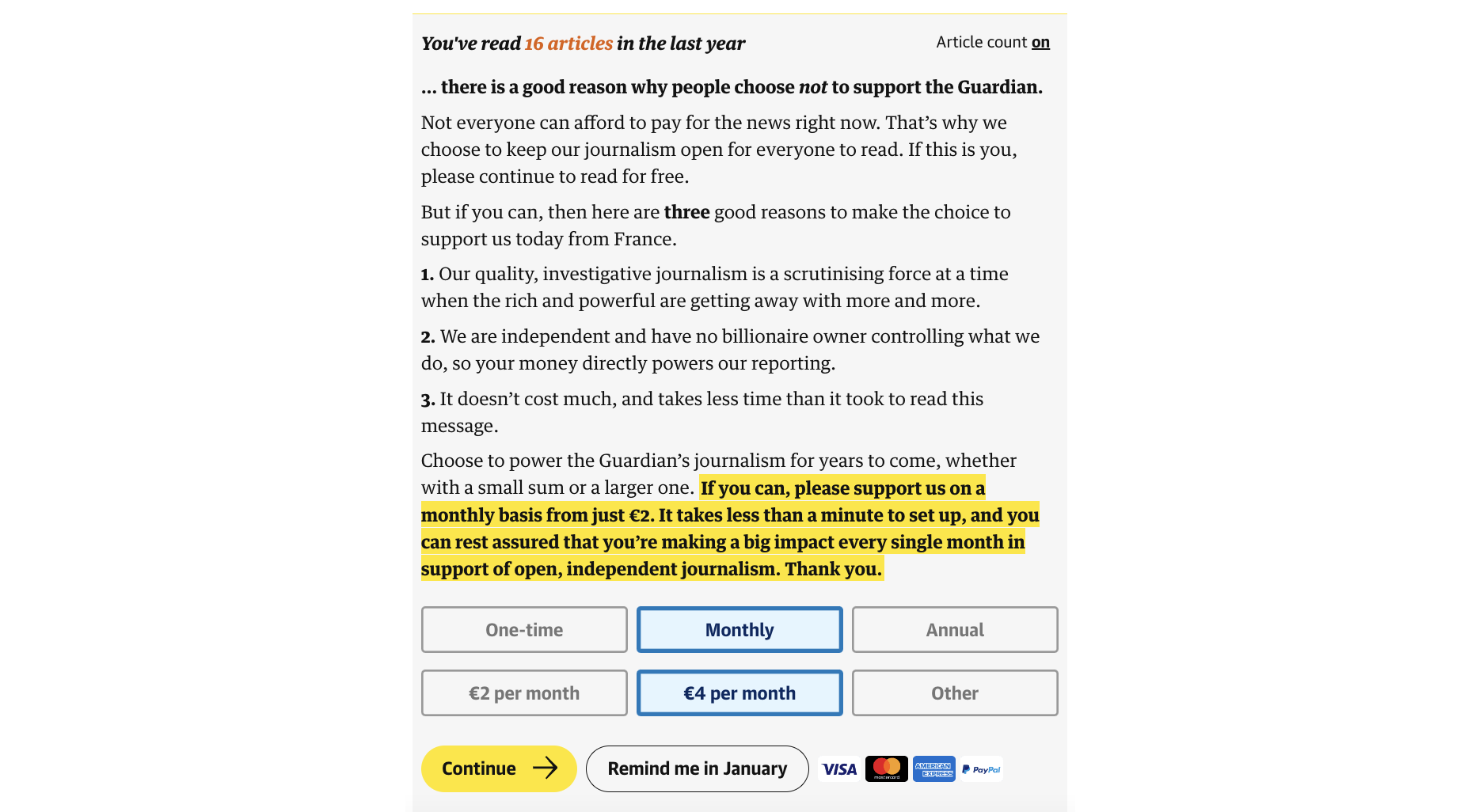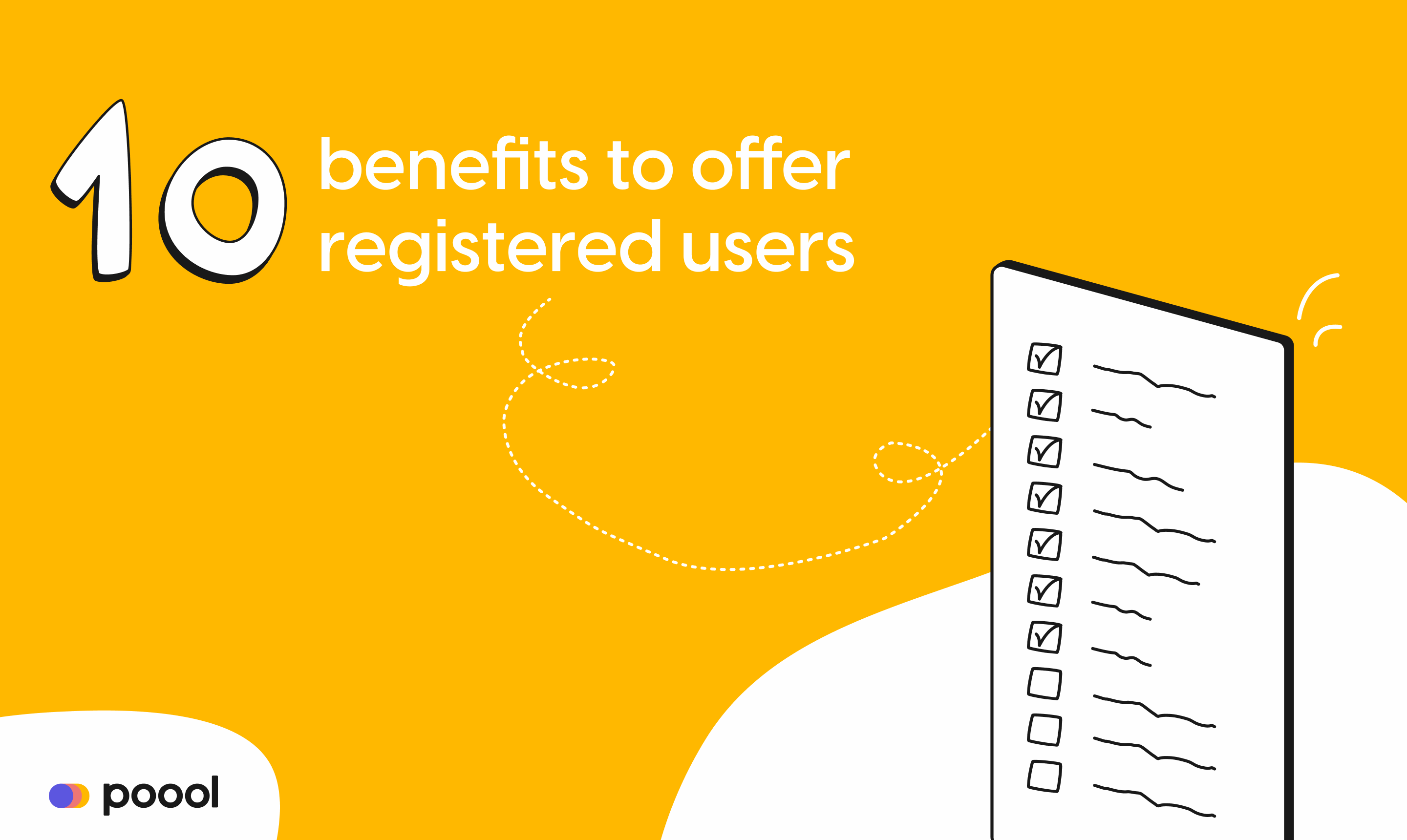With The New York Times reporting a remarkable 40% increase in subscription conversion rates thanks to their registration model, L'Équipe's registered users being 13 times more likely to subscribe, and The Independent witnessing a staggering 45x increase in subscriber propensity amongst de-anonymized users, it's clear that creating a free account can be a game-changer for digital publishers.
How can you drive readers to create a free account?
In two words: value exchange. In more words, by giving readers clear benefits of why they should create that account. Just like a free loyalty program will (hopefully) enable buyers to save money, a free membership should give users benefits they wouldn’t get otherwise.
While there are many benefits to give users in exchange for account creation, this article focuses especially on community building and personalization as these prove particularly valuable for engagement and conversion to subscription.
Important note before starting: Select benefits to registration that support both you and the reader.
For you:
- First-party data
- Increased engagement
- Higher propensity to subscribe or support you
- Loyalty and increased LTV
- ...whatever matches your business model
For the reader:
- An improved UX
- Personalized feed
- Additional or higher quality content
- Access to a community
10 benefits to offer in exchange for free account creation
- Part of a community: like Gens de Confiance
- UGC: allow readers to comment and debate like L’Équipe
- Personalized experience: Spotify’s wrap-up charts about streaming habits
- Digital events like Team for The Planet
- Interactive content: quizzes and games
- Exclusive content: a quota of articles per month, or newsletters
- Following favorite topics or authors like The Globe and Mail
- Save content for later and pick up where they left off like the Independent
- The chance to support your business, particularly for publishers who are 'known' for free, independent journalism, like The Guardian
- Bring your community offline
1) Part of a community
Create an online community where users can connect, share experiences, and build relationships with like-minded individuals.
Best in class example: Gens de Confiance
Gens de Confiance is a French site for posting ads, such as things to sell and rooms for rent, with 1.7 million members. The site works through referrals where you need to refer 3 friends in order to be part of the community.
Bertille Marchal, CMO of Gens de Confiance, who spoke during a panel on the subject of account creation during The Audiencers’ Festival in Paris underlines the importance of a like-minded community as well as creating a sense of FOMO if a user isn’t a part of it.
2) UGC: allow readers to comment and debate
UGC, user generated content, such as commenting, debating on topics and 'Ask Me Anything' sections help to increase engagement and brand loyalty, fostering a sense of community.
Best in class example: L’Équipe
The French sports publisher L’Équipe has developed a strong membership strategy thanks to their user generated comments section. Emmanuel Alix, CDO at L’Équipe, shared during The Audiencers Festival that member comments amount to 400,000 per month.
“35% of the audience is logged in on the website. And on app, it’s 50%.”
3) Personalized experience
Customize a user's feeds to their interests, ensuring they see relevant content and continue to consume more articles on a more frequent basis.
Best in class example: Spotify
The audio streaming platform Spotify takes personalization to the next level. Upon account creation, users are led through an onboarding journey to select their preferred genres and artists, surfacing relevant content from day one.
Not only can users manage preferences by following artists and podcasts, liking songs and playlists but they're also given a wrap-up of the year, something that's become a social trend ever since its launch, creating FOMO for anyone not on the platform.

4) Invite members to events
Host events or webinars to bring readers together, providing opportunities for interaction, community-building and knowledge sharing.
Best in class example: Team for The Planet
At Team for the Planet, a company that fights climate change, an online event is organized every week, during which community members can ask questions and interact with the team.
5) Interactive content: quizzes and games
Quizzes and games are incredibly valuable for audience acquisition, engagement, retention and upsell, helping to increase ARPU.
Best in class example: Makeup.com by L’Oréal
For brand publisher, Makeup.com by L’Oréal, quizzes are not only a way to drive readers to become members but also to understand their interests for personalized shopping recommendations and marketing content. To access results, users have to register for a free account.
6) Exclusive content: a quota of articles per month, or newsletters
Provide subscribers with exclusive access to premium content, such as articles or newsletters adapted to their interest.
Best in class example: The New York Times
The NYT gives readers access to one article for free in exchange for registration. Not only this, but newly registered users are led through an onboarding journey to drive engagement through encouraging newsletter subscription and app download.
7) Following favorite topics or authors
Allow users to customize their account space by following preferred topics or authors, receiving a notification when relevant content is published.
Best in class example: The Globe and Mail
The Canadian publisher, The Globe and Mail, allows registered users to follow certain topics or authors related to their interests to build a personalized news feed.
8) Save content for later and pick up where they left off
Provide the option to bookmark articles or videos, making it convenient for users to continue reading or watching at their own pace.
Best in class example: The Independent
Although this benefit is part of The Independent's premium model, it's a common feature of registration. But make sure that the "bookmark this article" icon is visible on every article, and that your wall blocks when a user tries to click on it.
9) The chance to support your business
Simply asking users to kindly support your business, being honest about what makes you different to other publishers and why you need their help can prove very effective, especially for those who won't likely subscribe or can't afford to. For instance, given that we know registration to be valuable to your business, share this with readers. It's free for them but means they're giving you a small something in exchange for access to content.
Best in class example: The Guardian
Although this isn't a registration wall, The Guardian is well known for it's very down-to-earth, honest tone.

10) Bring your community offline
An innovative example of a publisher adapting the benefits of registration to their business model is Gens de Confiance who collect data that supports both readers and their product.
For Gens de Confiance, it's essential for them to know a member's home address and zip code to present personalized sales offers or rental properties.
Thanks to this data point, they're now developing a version of their community exclusively focused on neighborhood: "your 200 closest neighbor members of Gens De Confiance". This test has been launched in three French cities so far and proves to work effectively.
This membership initiative takes community-building to the next level: building online communities that can then be translated offline, bringing neighbors together.
Dive deeper into the world of registration:



